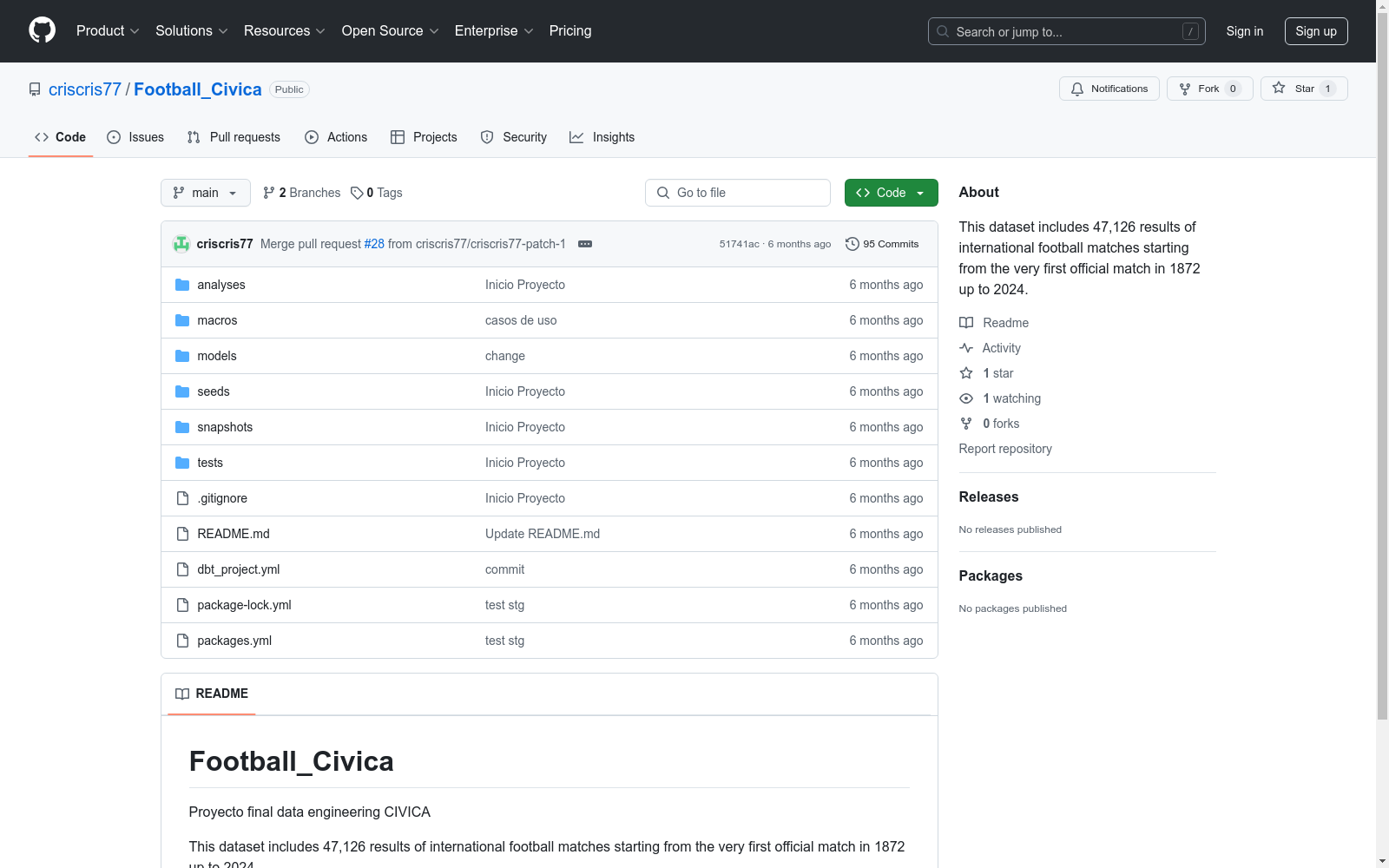Football_Civica|国际足球数据集|历史数据数据集
收藏github2024-06-18 更新2024-06-19 收录
下载链接:
https://github.com/criscris77/Football_Civica
下载链接
链接失效反馈资源简介:
该数据集包含从1872年第一场官方比赛至2024年的47,126场国际足球比赛结果。
This dataset encompasses the results of 47,126 international football matches, spanning from the first official match in 1872 to the year 2024.
创建时间:
2024-06-13
原始信息汇总
数据集概述
数据集名称
- Football_Civica
数据集来源
- CIVICA数据工程最终项目
数据集内容
- 包含47,126场国际足球比赛结果
- 时间跨度:1872年(首场官方比赛)至2024年
AI搜集汇总
数据集介绍

构建方式
在构建Football_Civica数据集时,研究者们系统性地收集了自1872年国际足球比赛开始以来的所有官方比赛结果,直至2024年。这一过程涉及对历史记录的详尽梳理与验证,确保每一场比赛的日期、参赛队伍、比分等关键信息均被准确记录。通过这种方式,数据集不仅涵盖了广泛的赛事,还保证了数据的完整性和可靠性。
特点
Football_Civica数据集的显著特点在于其跨越了长达一个半世纪的时间跨度,包含了47,126场国际足球比赛的详细结果。这一特点使得该数据集成为研究足球运动发展、队伍表现变化以及国际足球历史的重要资源。此外,数据集的高质量记录和广泛覆盖范围,使其在体育分析、历史研究以及数据科学应用中具有极高的价值。
使用方法
Football_Civica数据集的使用方法多样,适用于多种研究与应用场景。研究者可以利用该数据集进行时间序列分析,探讨足球运动在不同历史时期的演变;也可以进行队伍间的比较研究,分析各队伍在国际比赛中的表现趋势。此外,数据科学家可以运用此数据集进行机器学习模型的训练,以预测未来比赛结果或分析比赛策略的有效性。
背景与挑战
背景概述
Football_Civica数据集是由CIVICA数据工程项目团队创建的,涵盖了自1872年首次国际足球比赛至2024年的47,126场比赛结果。该数据集的构建旨在为足球历史研究、比赛分析以及预测模型提供丰富的数据支持。通过整合跨越一个半世纪的比赛记录,Football_Civica不仅为学术界提供了宝贵的研究资源,也为体育分析领域带来了新的视角和方法。
当前挑战
Football_Civica数据集在构建过程中面临多重挑战。首先,数据的时间跨度极大,从1872年至今,涉及多个历史时期的记录格式和数据质量问题。其次,国际足球比赛的规则和组织结构在不同历史阶段有所变化,这增加了数据标准化和处理的复杂性。此外,数据集的规模庞大,确保数据的准确性和一致性是一个持续的挑战。这些因素共同构成了Football_Civica在数据处理和分析方面的主要难题。
常用场景
经典使用场景
Football_Civica数据集在足球历史研究中占据重要地位,其经典使用场景包括对国际足球比赛趋势的长期分析。研究者利用该数据集,可以深入探讨不同国家队的表现变化、主场与客场优势的演变,以及重大赛事对球队排名的影响。此外,该数据集还支持对足球战术和策略的历史演变进行量化研究,为现代足球战术的发展提供历史视角。
解决学术问题
Football_Civica数据集解决了足球历史研究中的多个关键学术问题。首先,它为研究国际足球比赛的历史演变提供了详尽的数据支持,有助于揭示足球运动在全球范围内的传播与发展。其次,通过对比赛结果的统计分析,研究者可以探讨不同文化、经济和政治背景对球队表现的影响,从而丰富社会科学领域的跨学科研究。此外,该数据集还为预测模型和机器学习算法提供了丰富的训练数据,推动了体育数据分析技术的发展。
衍生相关工作
Football_Civica数据集的发布催生了多项相关经典工作。研究者基于该数据集开发了多种预测模型,用于比赛结果和球员表现的预测,显著提升了预测准确性。此外,该数据集还激发了对足球历史数据的深度挖掘,如对特定时期或特定地区的足球发展进行专题研究。学术界和业界的多项研究成果均受益于Football_Civica数据集的丰富性和完整性,推动了足球数据分析领域的持续进步。
以上内容由AI搜集并总结生成
